5 Effective Ways to Boost Core Strength and Alleviate Back Pain
in today’s fast-paced world, where many of us find ourselves hunched over screens or sitting for extended periods, back pain has become an unwelcome companion. Though, the key to alleviating this discomfort frequently enough lies in strengthening one of the moast vital areas of our body: the core. A strong core not only supports your spine but also enhances your overall stability and balance, making everyday activities easier and more enjoyable. In this listicle, we’ll explore five effective ways to boost your core strength while simultaneously easing back pain. From simple exercises to mindful practices, you’ll discover practical tips that can be seamlessly integrated into your routine.Whether you’re a fitness enthusiast or a beginner looking for relief, these strategies will empower you to reclaim your comfort and confidence. Let’s dive in!
1) Engage in Plank Variations: Planks are a powerhouse exercise for building core strength.by holding your body in a straight line from head to heels, you engage multiple muscle groups. Try variations like side planks or plank with leg lifts to challenge your core further and enhance stability, which can definitely help alleviate back pain
Planks are not just a simple exercise; they are a comprehensive workout that targets your entire core while promoting overall body stability. When you engage in a standard plank, you’re activating your abs, obliques, lower back, shoulders, and even your glutes. To elevate your routine, consider incorporating variations that challenge your muscles in different ways. For instance, side planks allow you to focus on your obliques, while planks with leg lifts introduce an element of balance and coordination, forcing your core to work harder to maintain stability. This multi-dimensional approach not only enhances strength but also improves posture, which is essential for alleviating back pain.
Here are some effective plank variations to try:
- Side Plank: Balance on one arm while stacking your feet, engaging your side muscles.
- Plank with Leg Lifts: While in a plank position, lift one leg at a time to challenge your balance.
- Plank Jacks: Jump your feet in and out while maintaining a plank position for added cardio.
- Forearm Plank: Lower down to your forearms to target your core and shoulders differently.
To help visualize the benefits of these variations, refer to the table below:
| Plank Variation | Muscle Groups Targeted | Benefits |
|---|---|---|
| Side Plank | Obliques, Shoulders | improves lateral stability and strength |
| Plank with Leg Lifts | Core, Glutes | Enhances balance and coordination |
| Plank Jacks | Core, Legs | Boosts heart rate while strengthening core |
| Forearm Plank | Core, Shoulders | Reduces strain on wrists while targeting core |
2) Incorporate Pilates into Your Routine: Pilates focuses on core strength, flexibility, and alignment, making it an excellent choice for those suffering from back pain.The controlled movements and emphasis on proper breathing help strengthen the deep abdominal muscles, providing better support for your spine and reducing discomfort
Integrating Pilates into your daily routine can be a game-changer for those dealing with back pain.This low-impact exercise method is designed to enhance your core strength,which is crucial for maintaining proper posture and spinal alignment. By focusing on controlled movements, Pilates encourages you to engage your deep abdominal muscles, supporting your spine and reducing the likelihood of discomfort. The emphasis on proper breathing not only aids in relaxation but also enhances oxygen flow to your muscles, promoting healing and recovery.
To get started with Pilates, consider the following key components that make it effective for back pain relief:
- Core Engagement: Each exercise targets the core, helping to stabilize the spine.
- Flexibility Enhancement: Stretching and lengthening muscles can alleviate tension and improve range of motion.
- Alignment Focus: Proper alignment is emphasized, which can prevent future injuries.
- Mind-Body Connection: Pilates encourages mindfulness, which can reduce stress and promote overall well-being.
Here’s a simple table to illustrate some beginner-amiable Pilates exercises that can help strengthen your core and alleviate back pain:
| exercise | Description | Benefits |
|---|---|---|
| Pelvic Tilts | Gently rocks the pelvis to engage the lower abs. | Strengthens core and reduces lower back tension. |
| Bridge | Raises the hips while keeping shoulders and feet on the ground. | Strengthens glutes and lower back muscles. |
| Cat-Cow Stretch | Alternates between arching and rounding the back. | Improves spinal flexibility and relieves tension. |
3) Practice Yoga for Core Stability: Yoga not only promotes relaxation but also strengthens the core through various poses. Incorporating poses like Boat Pose and Warrior III can enhance your balance and stability,leading to a stronger core and less strain on your back. Plus, the mindful movement can help release tension in your muscles
Yoga is a holistic practice that not only calms the mind but also serves as a powerful tool for building core strength. By incorporating specific poses into your routine, you can substantially enhance your balance and stability. Boat Pose is notably effective; it engages the abdominal muscles while promoting proper alignment. To perform this pose, sit on the floor, lean back slightly, and lift your legs to form a V shape with your body. Hold this position while breathing deeply, and you’ll feel your core working hard. Another excellent pose is Warrior III,which challenges your balance and engages multiple muscle groups. Stand on one leg, extend the other leg back, and lean forward while reaching your arms out in front of you. This pose not only strengthens the core but also improves overall body control, making daily activities easier and reducing the risk of back strain.
In addition to strengthening your core, the mindful movements in yoga can help alleviate tension in your muscles, which is often a contributing factor to back pain. By focusing on your breath and being present in each pose, you can release built-up stress and tightness in your body. Consider adding a few minutes of gentle stretching or restorative poses at the end of your yoga session. Poses like Child’s Pose or Sphinx Pose can promote relaxation and further ease any discomfort in the lower back.Here’s a simple table to illustrate the benefits of these key poses:
| Pose | Benefits |
|---|---|
| Boat Pose | Strengthens the core, improves balance |
| Warrior III | Enhances stability, engages multiple muscle groups |
| Child’s Pose | Relaxes the body, stretches the back |
| Sphinx Pose | Strengthens the spine, opens the chest |
4) Use Stability Balls: Incorporating a stability ball into your workouts can significantly boost your core strength. Exercises like ball passes or wall squats engage your stabilizing muscles, improving overall balance and coordination. This added challenge can lead to better posture and a reduction in back pain over time
Incorporating a stability ball into your fitness routine can transform your core workouts into a dynamic and engaging experience. The instability of the ball forces your body to recruit various stabilizing muscles, particularly in your abdomen and lower back, which are essential for maintaining proper posture and alignment. Exercises like ball passes—where you lie on your back and pass the ball between your hands and feet—are excellent for targeting your entire core. Similarly, wall squats performed with your back against the wall while resting your lower back on the stability ball can help strengthen your thighs and glutes while also engaging your core. This multifaceted approach not only builds strength but also enhances your balance and coordination,making everyday movements easier and safer.
As you progress in your stability ball workouts, you may notice notable improvements in your posture, which can lead to a reduction in back pain over time. By focusing on core stability, you create a strong foundation that supports your spine during various activities.To maximize the effectiveness of your stability ball exercises, consider the following tips:
- Start slow: If you’re new to stability ball exercises, begin with basic movements to build confidence.
- Focus on form: ensure proper alignment to prevent injury and maximize benefits.
- Incorporate variety: Mix different exercises to target all areas of your core and keep your routine fresh.
- Stay consistent: Regular practice will yield the best results in strength and pain relief.
5) Focus on Functional Movements: Engaging in exercises that mimic everyday activities can enhance core strength and support back health.Movements like squats, lunges, and deadlifts not only strengthen your core but also improve your overall functional fitness, making daily tasks easier and reducing the risk of injury
Incorporating functional movements into your exercise routine can significantly enhance your core strength while simultaneously supporting your back health. Squats,lunges,and deadlifts are prime examples of exercises that not only target your core but also engage multiple muscle groups,making them incredibly effective. These movements mimic everyday activities like sitting down, standing up, and lifting objects, which means that as you strengthen your body, you are also preparing it for the physical demands of daily life. This functional approach helps in improving your overall fitness and can lead to better performance in activities like climbing stairs or carrying groceries.
Moreover, focusing on these compound exercises can help reduce the risk of injury by promoting proper body mechanics and alignment. When performed correctly, they teach your body to move in a coordinated manner, enhancing stability and balance. here’s a fast overview of how these movements contribute to core strength and back health:
| Exercise | Core Benefits | Back Health Benefits |
|---|---|---|
| Squats | Strengthens abdominal and lower back muscles | Improves posture and spinal alignment |
| lunges | Enhances core stability and balance | Reduces lower back strain during movement |
| Deadlifts | Engages entire core for lifting | Strengthens lower back and promotes proper lifting technique |
In Conclusion
As we wrap up our exploration of these five effective ways to boost core strength and alleviate back pain, it’s clear that a strong core is more than just an aesthetic goal; it’s a foundation for overall health and well-being.By integrating these exercises and strategies into your routine, you not only enhance your physical stability but also pave the way for a more comfortable, active lifestyle. Remember, consistency is key—so be patient with yourself as you embark on this journey to strength and relief. whether you’re a fitness novice or a seasoned pro, embracing these practices can lead to significant improvements in your daily life. Here’s to a stronger core and a healthier back—your future self will thank you!


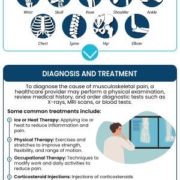

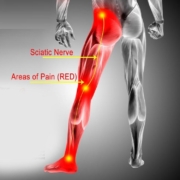
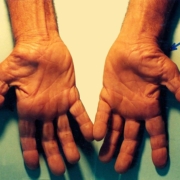
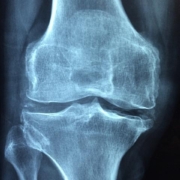
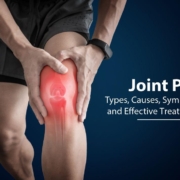


Leave a Reply
Want to join the discussion?Feel free to contribute!